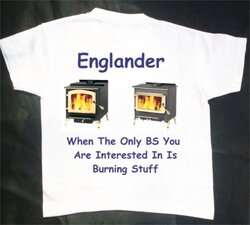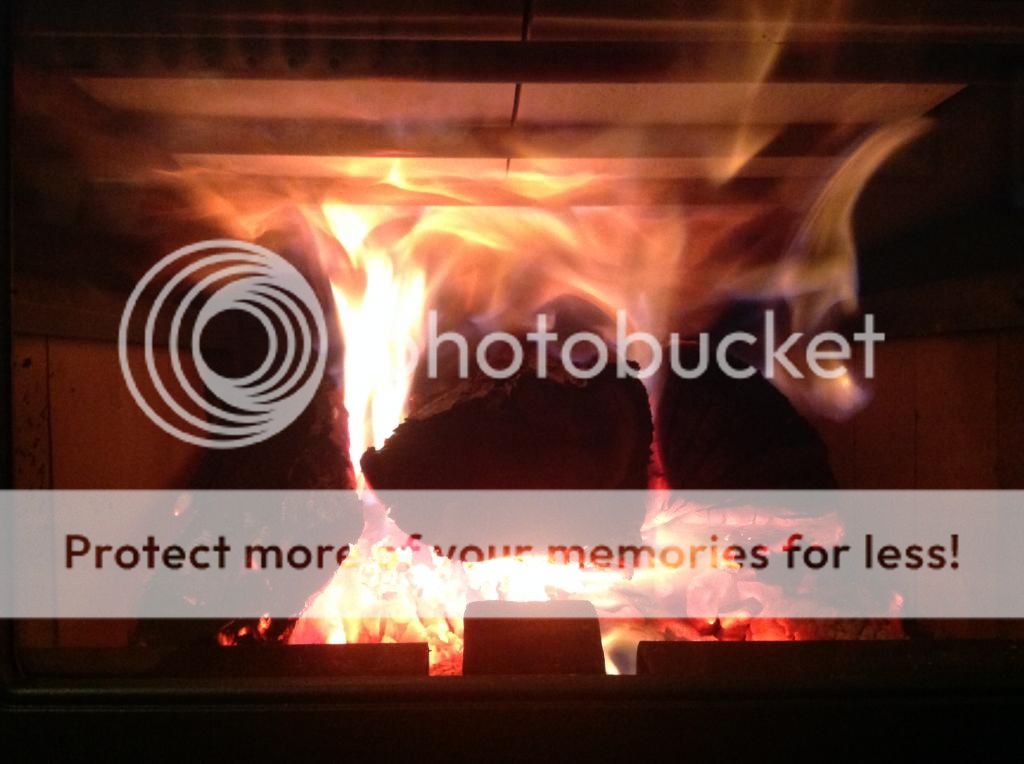So I decided to finally register at Hearth.com after years of lurking. Thanks to all the good folks here who have taken the time to review, discuss and explain how they run their stoves I picked up an Englander 30-NCH from my local Home Depot yesterday. This unit is replacing a highly inefficient unit we've been using for the past 3 years to heat our ~3ksqft home.
The old stove was a Century Heating 110,000BTU unit that was rated for 1,500sqft. When we purchased it, we really didn't know what we were doing and figured the higher the BTU output, the better. Wrong!
With no air inlet control and a need to heat a lot of space, things got out of control -BAD- a couple of times. This stove ended up getting overheating on two distinct occasions that were downright scary. The worst was when my stack temp gauge (about 4ft off the top of the stove after a 90 degree elbow) read ~1,500 degrees. Yep, 1,500 degrees! Thought we were going to lose the house that night...
Miraculously everything is still here, the stove didn't melt and our homemade hearth (built from advice found here on this site!) held up like a champ.
Now we've migrated to a 'real' stove and have high hopes that it'll do a far better job heating our home than the old stove. We picked it up just last night, heaved it onto the hearth and plugged it into the existing 6" stack (~30' Selkirk double walled stainless). We haven't fired it yet as it's relatively warm outside and I'm not looking to fill the house with smoke just yet. Although, we could probably take advantage of a couple of warm days here and cook the finish off through a few temp ranges with the windows open.
Looking forward to getting through another New England winter a little warmer and more comfortable for the family this year. Thanks to all the long time members who've posted so much helpful information over the years. It has been a huge help to us in getting our setup together.
Cheers
The old stove was a Century Heating 110,000BTU unit that was rated for 1,500sqft. When we purchased it, we really didn't know what we were doing and figured the higher the BTU output, the better. Wrong!
With no air inlet control and a need to heat a lot of space, things got out of control -BAD- a couple of times. This stove ended up getting overheating on two distinct occasions that were downright scary. The worst was when my stack temp gauge (about 4ft off the top of the stove after a 90 degree elbow) read ~1,500 degrees. Yep, 1,500 degrees! Thought we were going to lose the house that night...
Miraculously everything is still here, the stove didn't melt and our homemade hearth (built from advice found here on this site!) held up like a champ.
Now we've migrated to a 'real' stove and have high hopes that it'll do a far better job heating our home than the old stove. We picked it up just last night, heaved it onto the hearth and plugged it into the existing 6" stack (~30' Selkirk double walled stainless). We haven't fired it yet as it's relatively warm outside and I'm not looking to fill the house with smoke just yet. Although, we could probably take advantage of a couple of warm days here and cook the finish off through a few temp ranges with the windows open.
Looking forward to getting through another New England winter a little warmer and more comfortable for the family this year. Thanks to all the long time members who've posted so much helpful information over the years. It has been a huge help to us in getting our setup together.
Cheers






 ) Once we get up to 500* and just above, this beast starts throwing the heat. Right now we've got the downstairs at 80* and upstairs is sitting at 70*. That's been typical for us over the past couple years with the old inefficient stove but my hope is that we'll begin to reduce that 10* differential with more consistent burning in this stove.
) Once we get up to 500* and just above, this beast starts throwing the heat. Right now we've got the downstairs at 80* and upstairs is sitting at 70*. That's been typical for us over the past couple years with the old inefficient stove but my hope is that we'll begin to reduce that 10* differential with more consistent burning in this stove.  " Music to my ears
" Music to my ears 